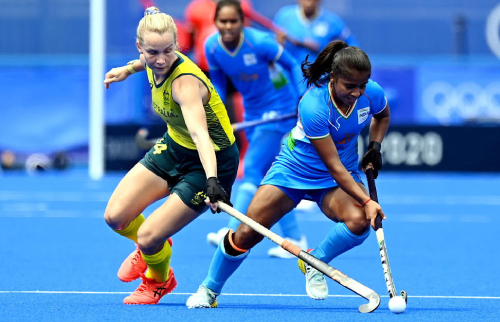In Spotlight
- Upcoming

- Upcoming

Hockey has always prioritised athlete safety and welfare when considering the Rules and Regulations of the sport and whilst like many sports, there is an element of risk, this can be reduced through the Rules and the way the game is played. This is why goalkeepers are required to wear personal protective equipment (PPE) and why the Rules allow field players to wear specific pieces of PPE during open play, with additional equipment being allowed when defending penalty corners.
Ensuring that these pieces of PPE provide adequate protection, whilst not creating additional risks to other players, is very important. In many countries PPE is regulated to ensure minimum quality and performance levels are achieved, and one of the most comprehensive sets of regulations is the European Union’s Personal Protective Equipment (PPE) Regulations (EU 2016/425). This requires manufacturers, importers and suppliers to ensure their products have been designed and manufactured to satisfy the appropriate EU safety requirements, and that the products are marked with the ‘CE’ symbol showing compliance before being placed onto the European market. To ensure consistency in how certain products should be assessed to allow CE marking, European Standard EN 13546 has been developed.
PPE worn by hockey players comprises:
1. Goalkeeper hand, arm, chest, abdomen, leg, foot and genital protectors and 4. field-player shin protectors. The performance required from these pieces of PPE are defined in EN 13546 and the FIH recommends players only purchase products that have been tested and certified as complying with this standard or comply with equivalent national regulations.
2. Field-player penalty corner face protectors / masks. Unfortunately, EN 13546 does not include requirements for these pieces of PPE. This currently means that there is no regulatory guidance on how these pieces of equipment should perform, neither in Europe nor anywhere in the world. This places the responsibility of deciding how to test a product onto manufacturers and test laboratories, which can lead to inconsistencies and the possibility of poorer quality products entering the market. To help resolve this deficiency, the FIH is currently sponsoring a PhD research project at Loughborough University in the UK. Phase 1 of this project has looked at the performance of field-player penalty corner face protectors / masks. The work is now complete and published (Assessing Field Hockey Face Mask Performance - Annals of Biomedical Engineering) and its recommendations and findings have been adopted by the FIH. These include assessments of the key properties of a field player face mask including fit, facial coverage, impact performance, and resistance to mechanical failure.
Two categories of mask performance have been developed.
Category 1 – headgear must meet all requirements for fit, coverage, mechanical failure and impact performance, where the test speed is 80 mph and will therefore be considered suitable for all levels of hockey.
Category 2 – headgear must meet all requirements for fit, coverage, mechanical failure and impact performance, where the test speed is 60 mph and will therefore be considered suitable for lower levels of hockey, including junior play.
The following field-player penalty corner face protectors / masks have been tested and shown to provide adequate protection to allow them to be awarded the designation of being FIH Recommended. All are produced by companies that are members of the FIH Quality Programme:
Please note that all Category 1 face masks are therefore by definition also suitable for Category 2 use, including junior play.
|
Manufacturer / brand supplier |
Product name | Company website | FIH Category of performance |
CE Marked (only required for products being sold in the European market) |
|
Grays Hockey |
Grays Facemask | www.grays-int.com | 1 | June 2025 - currently being tested |
| Obo Sport | OBO OOP FaceOff Steel | www.obo.co.nz | 1 | Yes |
| Osaka | Osaka Steel Mask | www.osakaworld.com | 1 | Not intended for the European market |
| TK Sports | TK1 Player Mask | www.tk-sports.eu | 1 | Yes |
| TK Sports | TK3 Player Mask | www.tk-sports.eu | 1 | Yes |
| TK Sports | TK2 Player Mask | www.tk-sports.eu | 2 | Yes |
| Mercian Hockey | Evolution Facemask | www.mercianhockey.com | 1 | August 2025 – pending |
3. Goalkeeper face protectors / helmets. The next phase of work that will be undertaken by the Loughborough project will include assessing the performance of goalkeeper face protectors / helmets. Until that works is complete there is no single standard that applies, so consumers are advised to only consider products that carry the European Union’s CE mark or comply with equivalent national regulations.
4. Field-player hand protectors. These are not included within the scope of EN 13546 but are covered by European Union’s Personal Protective Equipment (PPE) Regulations, so the FIH recommends players purchase products that carry the European Union’s CE mark or comply with equivalent national regulations.
5. Mouth Guards. Mouth guards should fit snugly into the mouth without being too tight or too loose. They should be made from durable, tear-resistant materials that are easy to clean. It is important that a mouth guard allows for easy breathing and does not obstruct airflow. There are three different types of mouth guard:
Field-player protective face protectors are designed to reduce the risk of injuries during specific activities. However, no protective equipment can guarantee complete safety or prevent all injuries. Users must follow all safety guidelines and instructions provided with the product. The FIH are not liable for any injuries or damages resulting from product failures, misuse, improper fitting, or failure to adhere to safety recommendations.